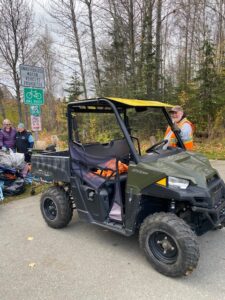By: Greatland Reviewer
Here is an update on Geocaching HQ’s (aka. Groundspeak) and my efforts to clean up the playing field so players have a more positive experience in the field:
Owner Attention Requested (formally known as “Needs Maintenance”): I posted Reviewer Notes on 31 caches with the “Owner Attention Requested” attribute showing for which I had not previously posted a note. There are a total of 476 caches (6.2% of total caches) with “Owner Attention Requested.” This is the only action I will take on these caches UNLESS there is a growing string of DNFs or other issues that appear. Cache Owners can clear the “Owner Attention Requested” attribute from their cache page by writing an “Owner Maintenance” log to the page. Re-enabling a cache page does not automatically clear the “Owner Attention Requested” attribute.
There are currently 261 temporarily disabled cache pages (3.6% of total caches) in Alaska, which is up 75 since July 26. Autumn has begun in Alaska with termination dust on the Chugach front range, so now is a good time to perform cache maintenance before the playing field gets a coating of white camouflage.
Geocaching HQ has not yet gone to automating disabling and archiving caches. Those steps are still left to the local Reviewer due to variability in local conditions and other factors. One of the other factors I find most challenging is how to manage the high difficulty caches. High difficulty caches by their very nature grow strings of DNFs and sometimes go years between finds. However, high difficulty caches can and do go missing, so sometimes cachers are looking for phantom caches that are not in the field. I have recently had conversations with cachers at events who say they enjoy the feeling of satisfaction finding a high difficulty cache, but that they tend to avoid high difficulty caches if the cache has not been found or there is not an Owner Maintenance log confirming the presence of the cache logged during the past year. So, Cache Owners of high difficulty caches are encouraged to annually check on the well-being of their caches to have cachers keep trying and avoid a “Temporary Disable” from the Reviewer that is meant to be a wellness check nudge. I am open to feedback from Cache Owners and Cache Seekers on alternative ways to handle this.
The process of archiving a cache takes at least sixty days and most times, longer. First, the local Reviewer posts a “Temporary Disable” log, which disables the cache page to signal players the cache has issues. Thirty or more days later, the Reviewer will post a “Reviewer Note” encouraging Cache Owner of the disabled cache page to take action within thirty days to avoid archival of the cache page. “Action” does not necessarily entail re-enabling the cache. A “Write Note” log explaining extenuating circumstances (construction, flood, injury, etc.) with an anticipated timeline is all that is required to head off cache archival.
Sometimes, real life gets in the way and a cache gets archived. Archival is not necessarily permanent. If a Cache Owner wants to keep the cache, s/he can e-mail or message the Reviewer via the Reviewer’s profile and request un-archival. If another cacher has not already submitted a new cache that creates a proximity problem and the original cache meets the current Guidelines, the archived cache will be un-archived in a disabled state, giving the Cache Owner some time to perform cache maintenance and enable the cache page.
Cache Owners are encouraged to check their Dashboard to quickly view which of their cache pages have the “Owner Attention Needed” attribute set, which cache pages are “Temporarily Disabled,” which cache pages have recently had a “Reviewer Note” posted to them during the past thirty days, and which cache pages have a low “Health Score” as calculated by the Groundspeak algorithm. The Cache Owner of a cache page that has a Low Health Score will receive an e-mail from Groundspeak HQ, typically before the local Reviewer posts a Reviewer Note or Temporarily Disables the cache page.


